While the official coins of the late Republic were still minted under the control of the moneyers, it became more and more common practice for imperators to coin their own money to pay their troops and for propaganda purposes.
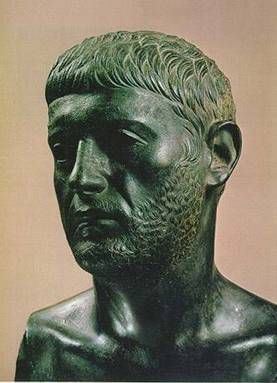

Reverse: Minerva, helmeted and draped, standing right, holding spear in right hand and Victory in extended left; shield at side, C • VIBIVS downward to right, VARVS downward to left.
Die Orientation: -
Weight: 3.67 g
Provenance: Heritage Auctions - Long Beach Expo World & Ancient Coins Signature Auction Session 5 (September 5-9 2019), lot 155. Coin Galleries: The Numismatic Review and Fixed Price List (May - June, 1960), lot A371.
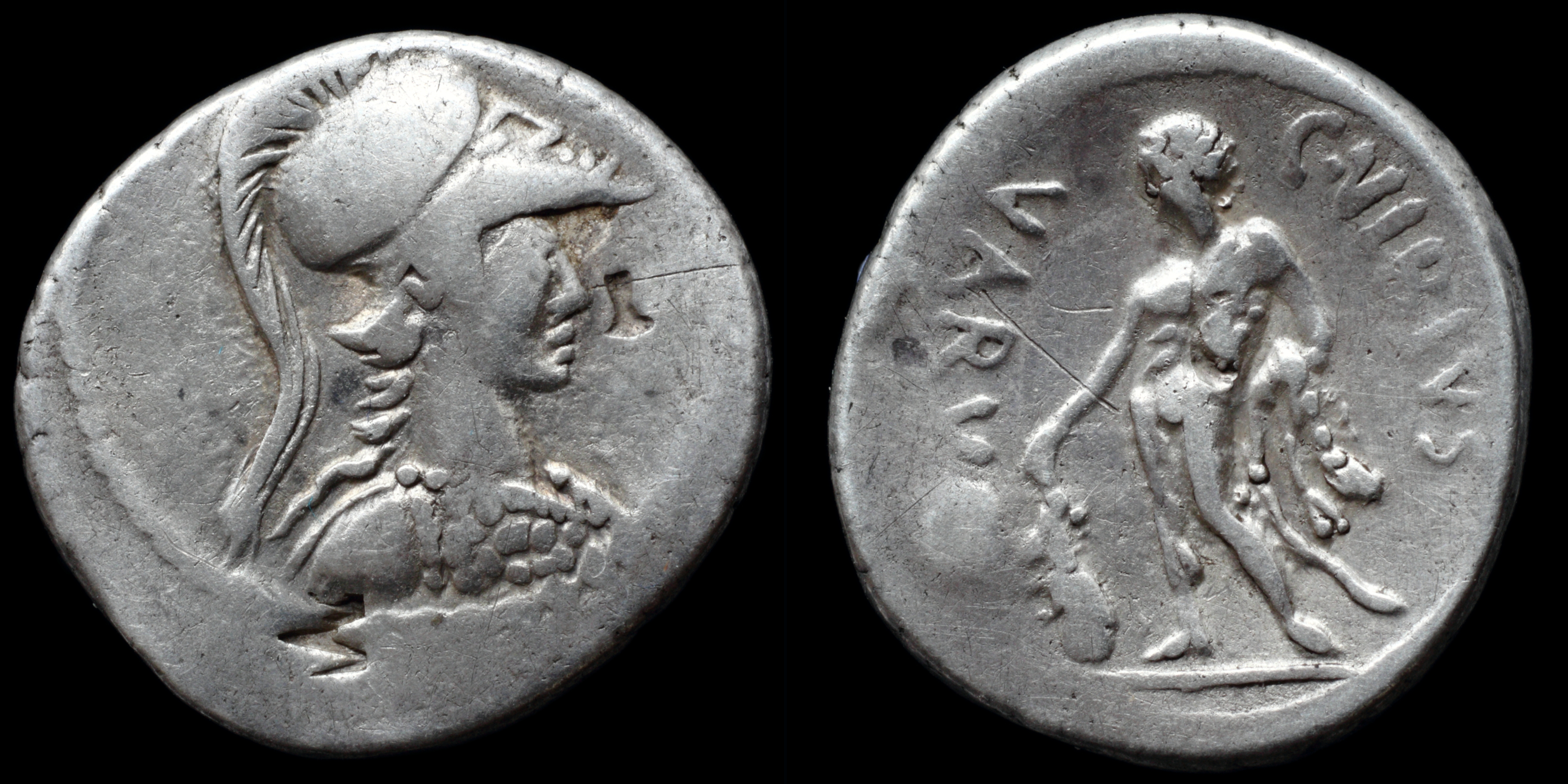
Reverse: naked Hercules standing left, resting right hand on club set on ground, lion skin in the left hand; C•VIBIVS / VARVS
Die Orientation: -
Weight: 4 g
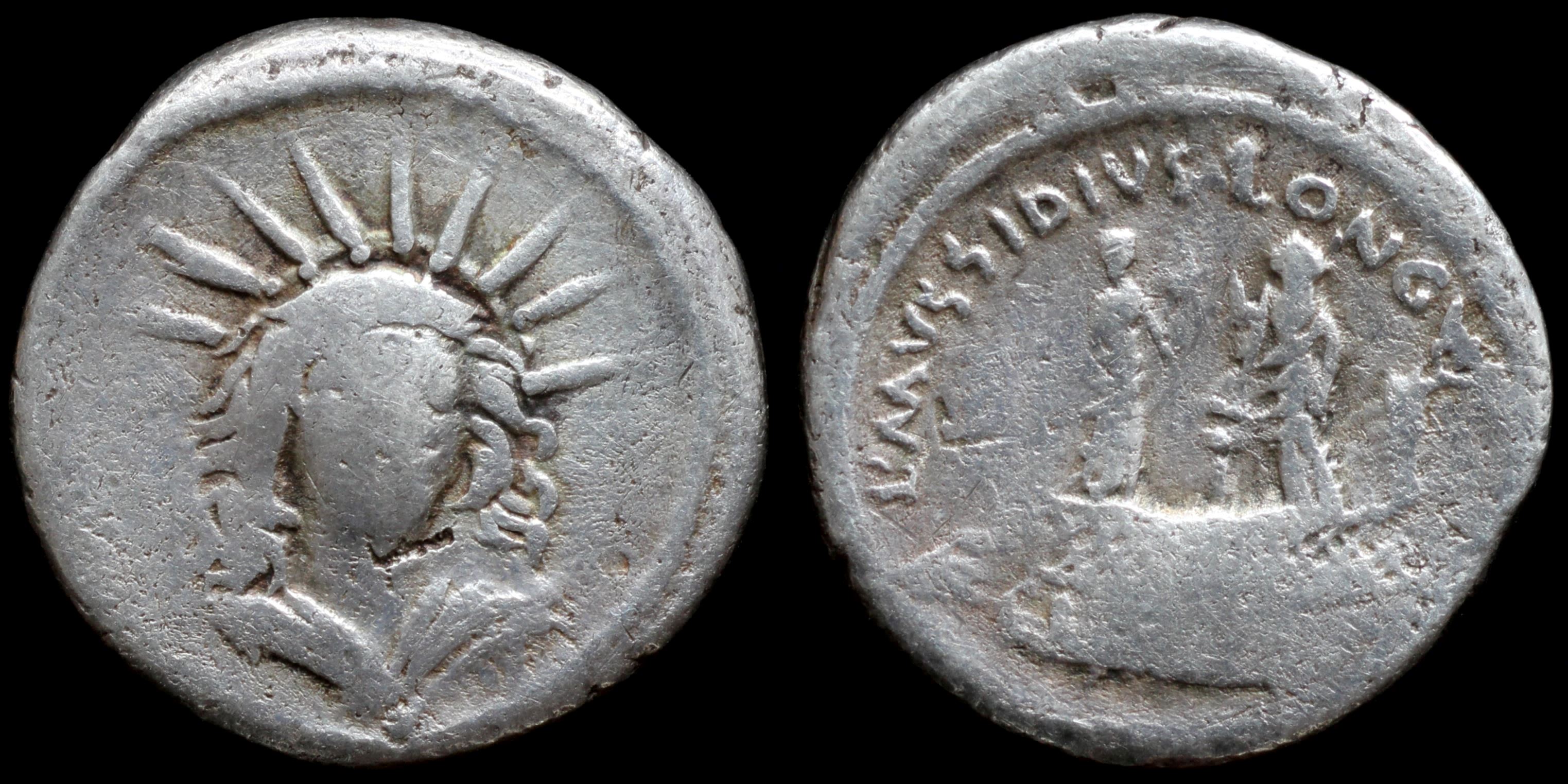
Reverse: two statues of Venus Cloacina standing on platform, L·MVSSIDIVS·LONGVS / CLOACIN
Die Orientation: -
Weight: 3.4 g
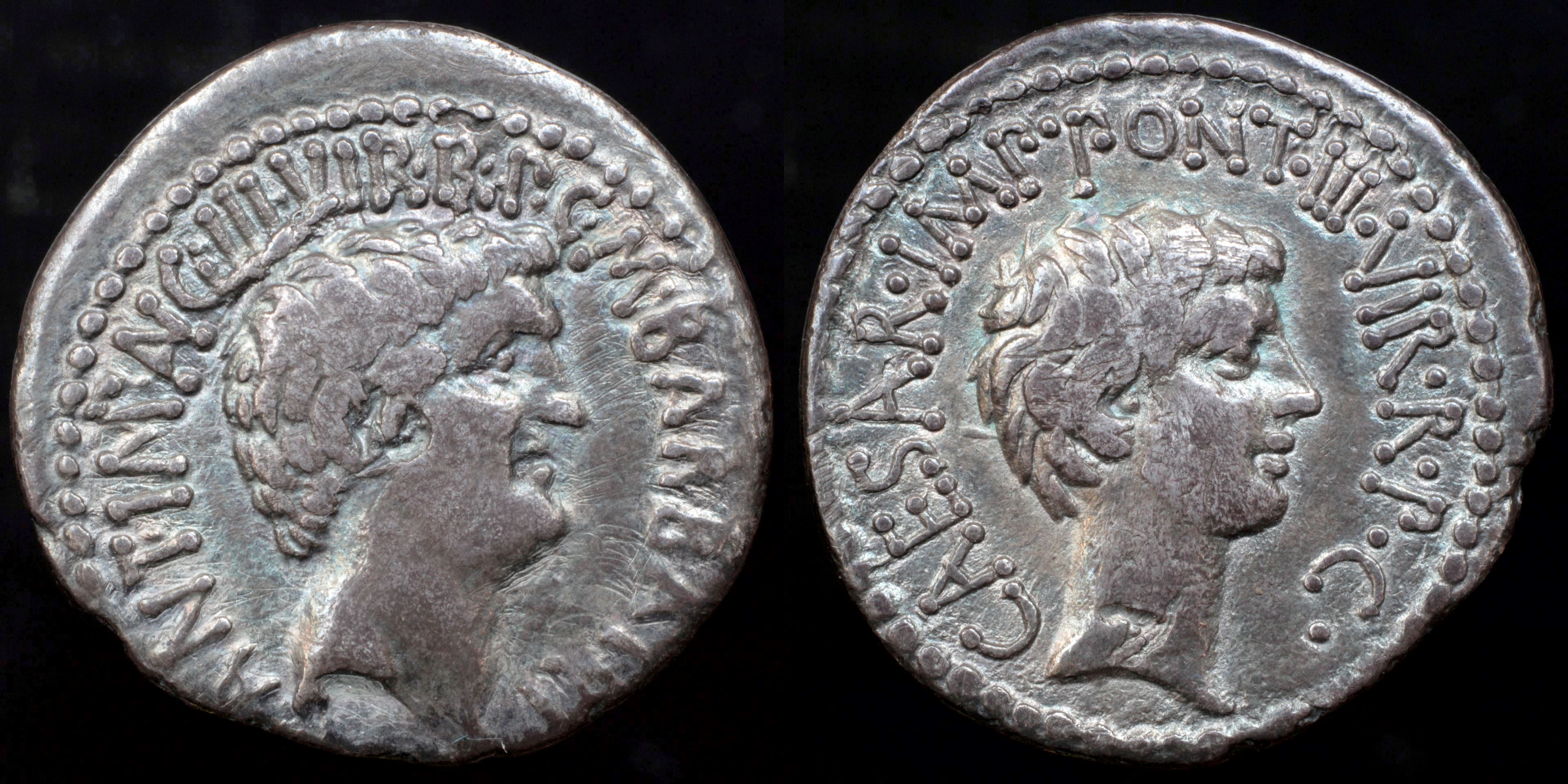
Reverse: head of Octavian Caesar right, CAESAR·IMP·PONT·III·VIR·R·P·C·
Die Orientation: -
Weight: 3.3 g
Mark Antony, Octavian Caesar, struck in Ephesus? from spring to early summer 41 BC. Moneyer held unusual office quaestor pro praetore in the east in 41-40 BC. He accompanie Mark Antony after the battle of Philippi. He was probably also Curule Aedile. He restored aedicula shrine on the Forum Romanum and fountain of goddess Juturna (Lacus Iuturnae).
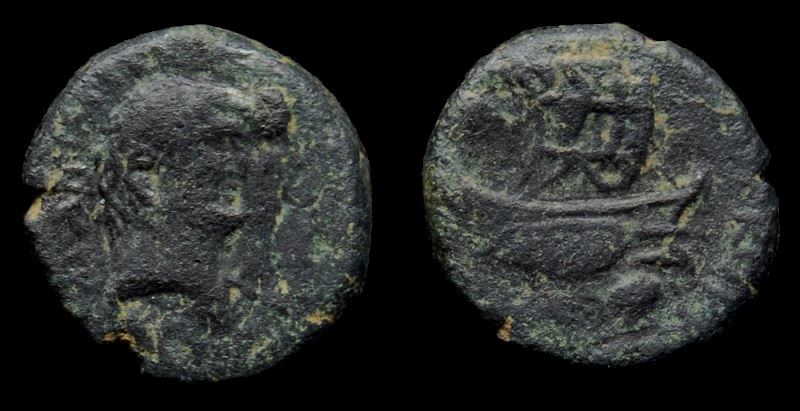
Reverse: M OPPIVS CAPITO PRO PR PRAEF CLASS F C - Galley right, below A.
Die Orientation: -
Weight: 3.69 g
"M. Oppius Capito was Antony’s senior naval officer, stationed at the main naval base at Piraeus. His coins are found distributed around central Greece, and were most likely struck at Piraeus. His coins are found in two series, a heavy and a light and it has been suggested that some were struck at Tarentum where part of Antony’s fleet was based during the joint action against Sextus Pompey in 37-36 BC"
"The coin illustrated here is an as, marked A, with jugate portraits of Antony and Octavia on the obverse, a galley under sail on the reverse. It falls into the "light" series, perhaps issued a year after the first release of the coins, on a lighter standard, in the name of Antony and Oppius Capito. Although this experimental coinage was short-lived and very rare today, it is interesting to note that the great currency reform started by Octavian, after he had taken the name Augustus and become the first Emperor of Rome, resulted in a bronze coinage using exactly the same denominations as Anthony's fleet issues."
Provenance: Private purchase (August 2017).
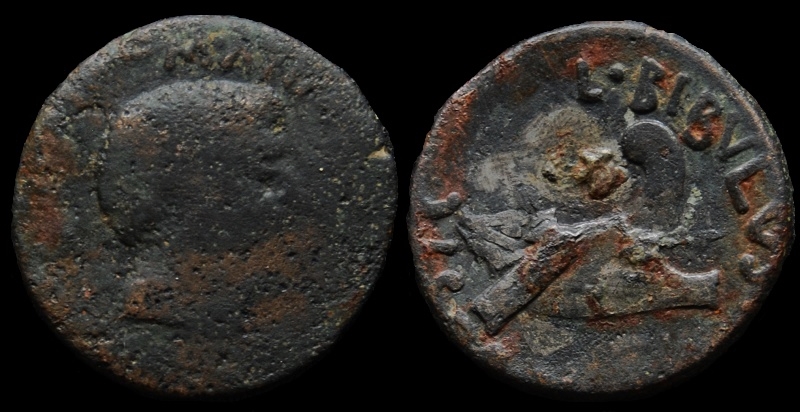
Reverse: L•BIBVLVS•M•F•PR•DESIG, quinquereme right, with three oars and stern ending in boar's head left.
Die Orientation: 0 H
Weight: 3.61 g
Provenance: Private purchase (May 2018).
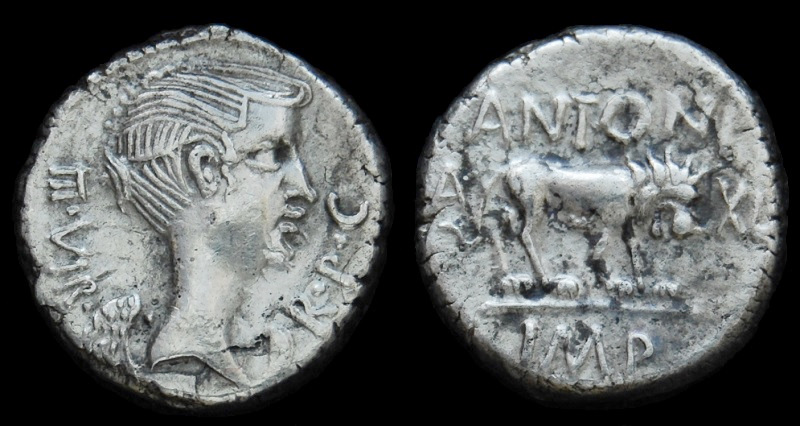
Reverse: Lion walking right; ANTONI above; A - XLI ( = 41, Antony’s age at time of issue) across field; IMP in exergue.
Die Orientation: -
Weight: 1.88 g
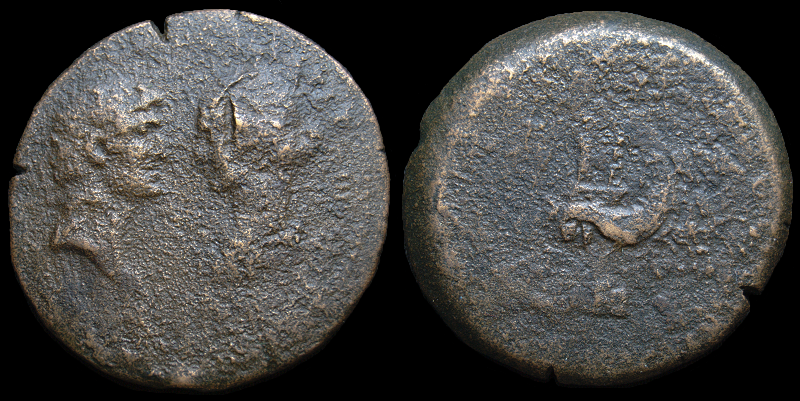
Reverse: M • OPPIVS • CAPITIO • P[R) • PR • PRAEF • CLASS • F • C • - Mark Antony and Octavia in quadriga of hippocamps; in l. field, HS and below, Δ and astragalos.
Die Orientation: -
Weight: 30.16 g
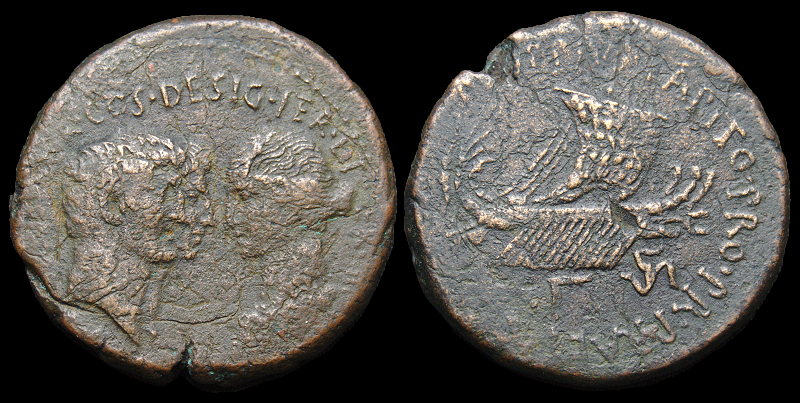
Reverse: M•OPPIVS•CAPITO•PRO•PR•PRAEF•CLASS•F•C - Three galleys under sail to right. Γ (Gamma) and Triskeles below.
Die Orientation: -
Weight: 25.78 g
.png)
Reverse: L•BIBVLVS•M•F•PR•DESIG, quinquereme right, with three oars and stern ending in boar's head left.
Die Orientation: 0 H
Weight: 4.92 g
.png)
Reverse: Desultor (horseman who leaps from one horse to another), wearing conical cap and holding whip, right on horseback, second horse behind; palm frond and wreath to left; P SEPVLLIVS above, MACER below.
Die Orientation: 8 H
Weight: 3.87 g
"This is the first portrait issue of Mark Antony. Struck within a month or two of the assassination of Julius Caesar, Antony is shown bearded, clearly symbolic of one in mourning. For the next two and a half years, until after the battle of Philippi, the portraits on coins of both Mark Antony and Octavian were bearded for the same reason. The reverse depicts a rider who switches from one horse to the other while the horses are in motion, an equestrian event which was part of the Parilian games, celebrated each year on 21 April. In 44 BC, the year of Julius Caesar’s assassination, the Parilia celebrated Caesar’s victory at Munda. Including a desultor on the reverse, Mark Antony probably attempted to kindle public support of the Caesarian cause." Provenance: From the John L. Cowan Collection. Ex Cederlind BBS 154 (31 March 2010), lot 213, ex Gorny & Mosch auction 180 (12 October 2009), lot 322, ex Numismatica Ars Classica auction 41 (20 November 2007), lot 17.
.png)
Reverse: M OPPIVS CAPITO PRO PR PRAEF CLASS F C - Galley right; A below.
Die Orientation: 11 H
Weight: 6.69 g

Reverse: M OPPIVS CAPITO PRO PR PRAEF CLASS F C - Two quinqueremes sailing right; caps of Dioscuri above, B below.
Die Orientation: 0 H
Weight: 7.76 g
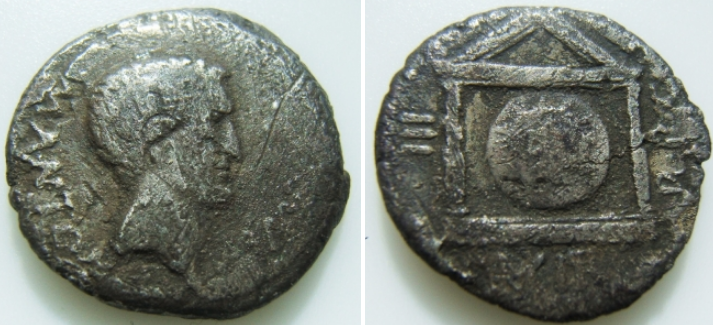
Reverse: III VIR R • P • C - Facing head of Sol on disk within distyle temple.
Die Orientation: 6 H
Weight: 3.25 g
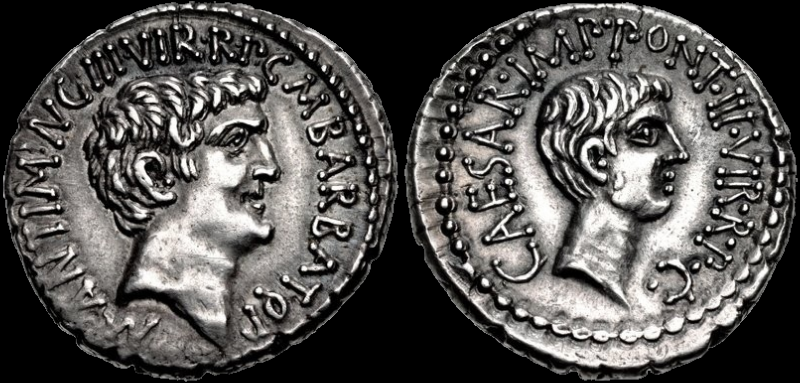
Reverse: Bare head of Octavian right, wearing slight beard; CAESAR • IMP • PONT • III • VIR • R • P • C • around.
Die Orientation: 12 H
Weight: 3.99 g
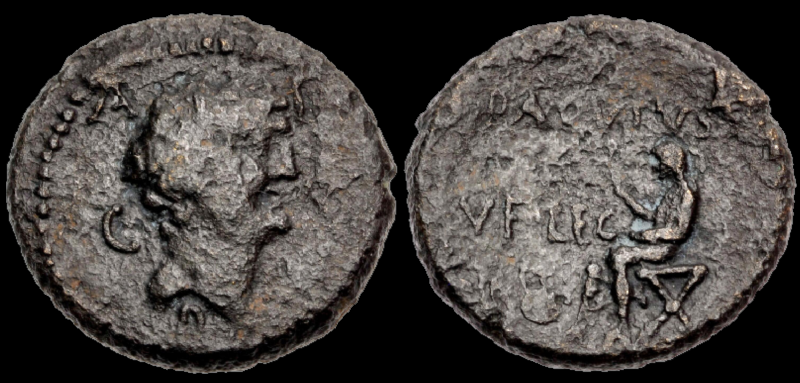
Reverse: Togate figure seated left on sella curulis, urn at feet, holding tablet; Q PA[Q]VIVS/[R]VF LEG in two lines in field.
Die Orientation: 12 H
Weight: 7.25 g
Provenance: CNG Electronic Auction 484 (27 January 2021), lot 507.
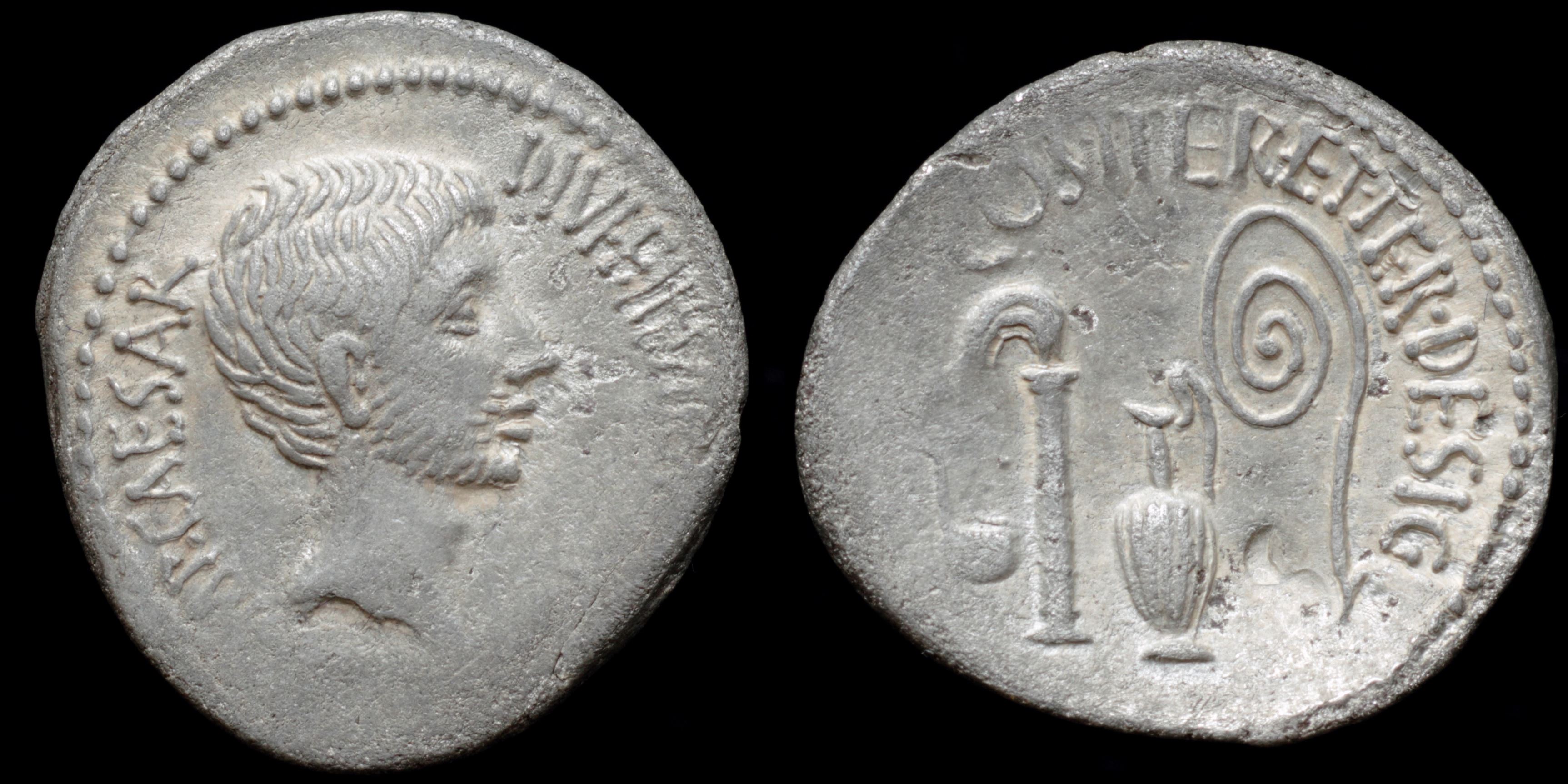
Reverse: sacrificial implements: simpulum (ladle), aspergillum (sprinker), ewer (jug), lituus (augural wand), COS·ITER·ET·TER·DESIG
Die Orientation: -
Weight: 3.5 g
.jpg)
Reverse: DIVOS IVLIVS, Head of Julius Caesar facing right, wearing laurel wreath
Die Orientation: 9 H
Weight: 20.82 g
.jpg)
Reverse: COS ITER ET TER DESIG, Pontifical emblems: simpulum, aspergillum, jug, and lituus
Die Orientation: 6 H
Weight: 3.57 g
.jpg)
Reverse: Equestrian statue with Octavian, facing left; S·C in exergue
Die Orientation: 6 H
Weight: 3.25 g
"This is a favourite type coin for me as it is the first appearance of Octavian on a coin. Very often found in low grade, it is nonetheless a very historically important coin. It’s a great piece of history at a low price! Here you see a young Octavian for the first time on the obverse. The reverse shows the equestrian statue that he demanded the senate build for him after putting down the siege at Mutina. It is a brazen display of Octavian’s contempt for the senate."
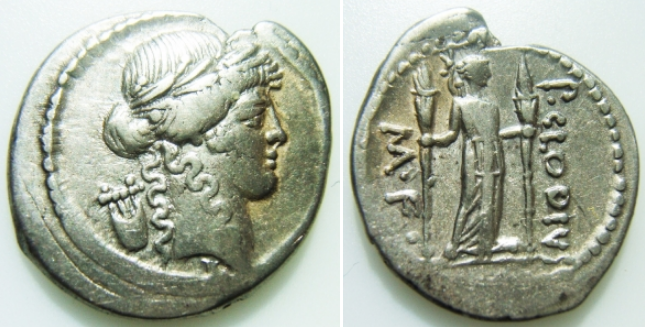
Reverse: P•CLODVIS / M•F• - Diana standing facing, with bow and quiver over shoulder, holding lighted torch in each hand.
Die Orientation: 12 H
Weight: 4.08 g
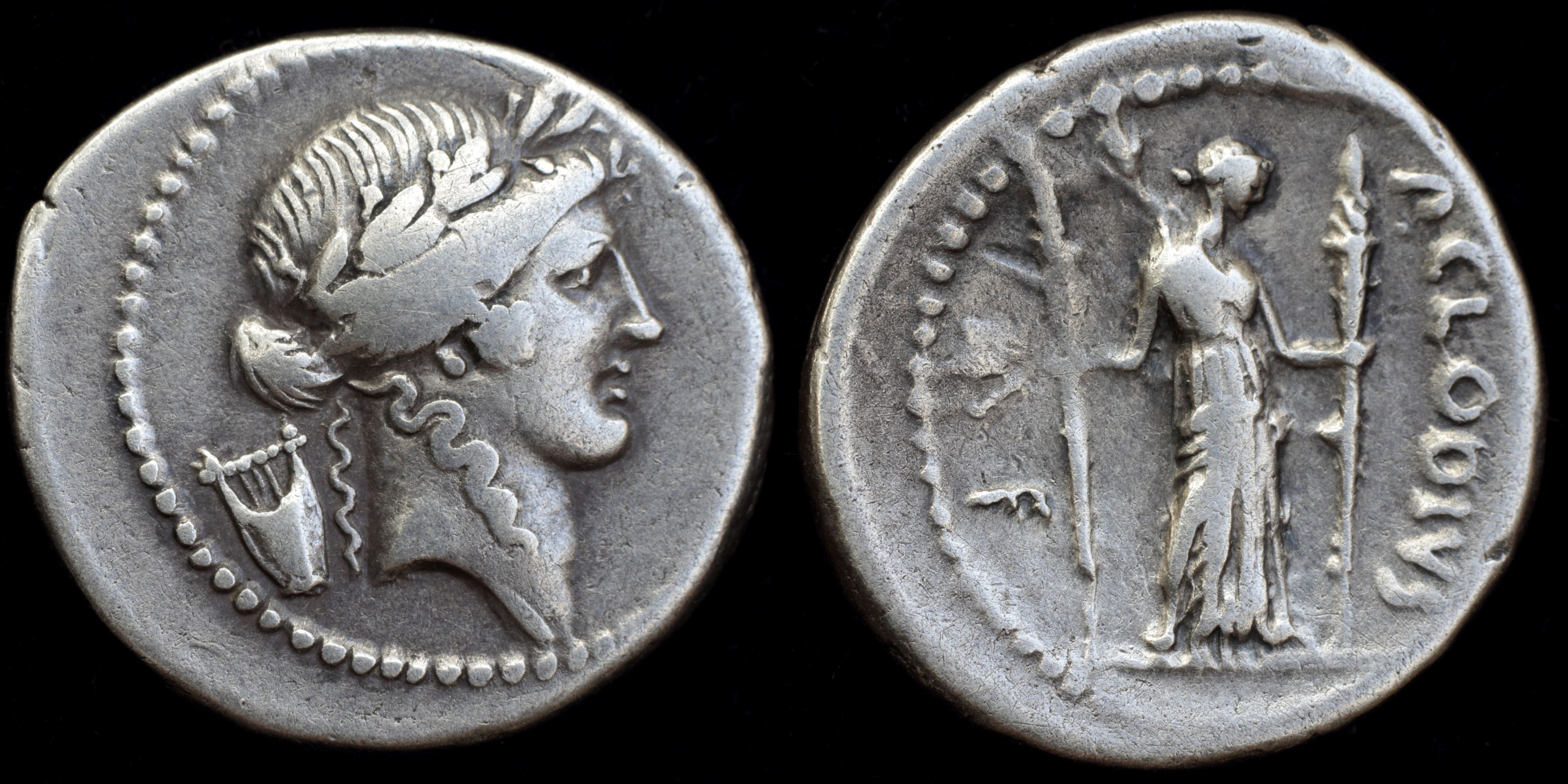
Reverse: Diana Lucifera standing half right holding torch in each hand, P·CLODIVS / M·F
Die Orientation: -
Weight: 3.8 g
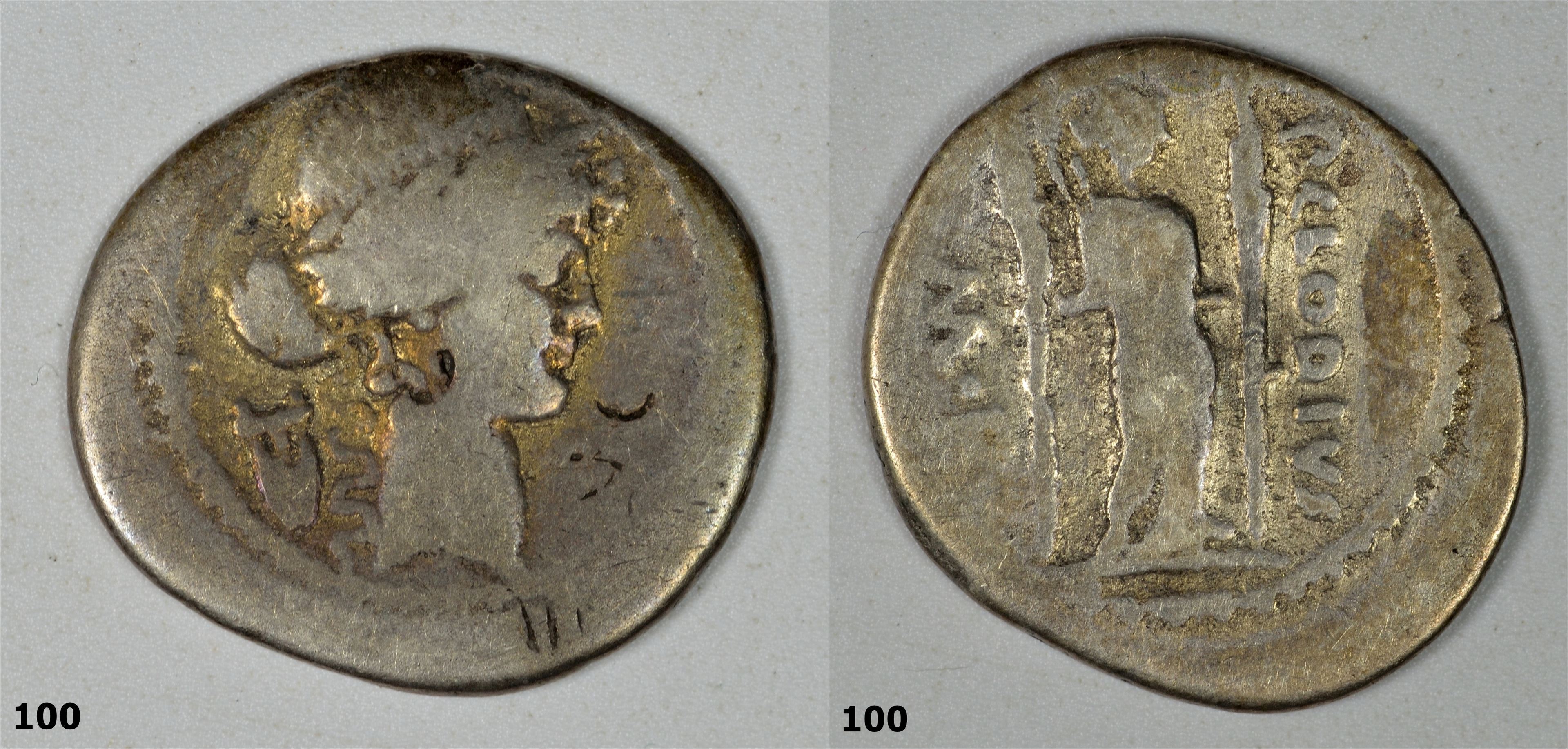
Reverse: Diana standing facing, with bow and quiver over shoulder, holding lighted torch in each hand
Die Orientation: -
Weight: 3.2 g
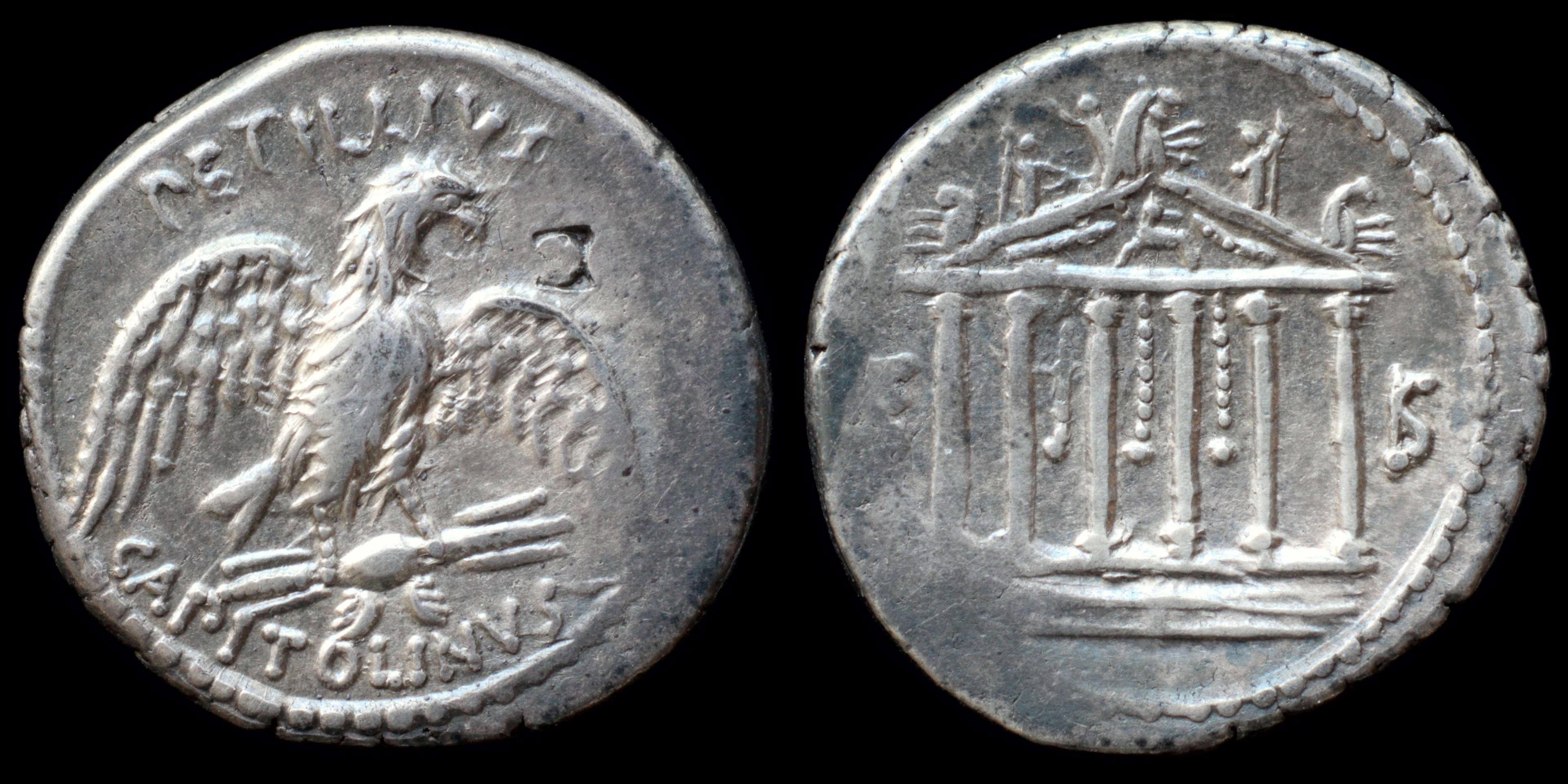
Reverse: hexastyle temple of Jupiter Optimus Maximus (Roman Capitol), richly decorated roof; F__S
Die Orientation: -
Weight: 3.9 g
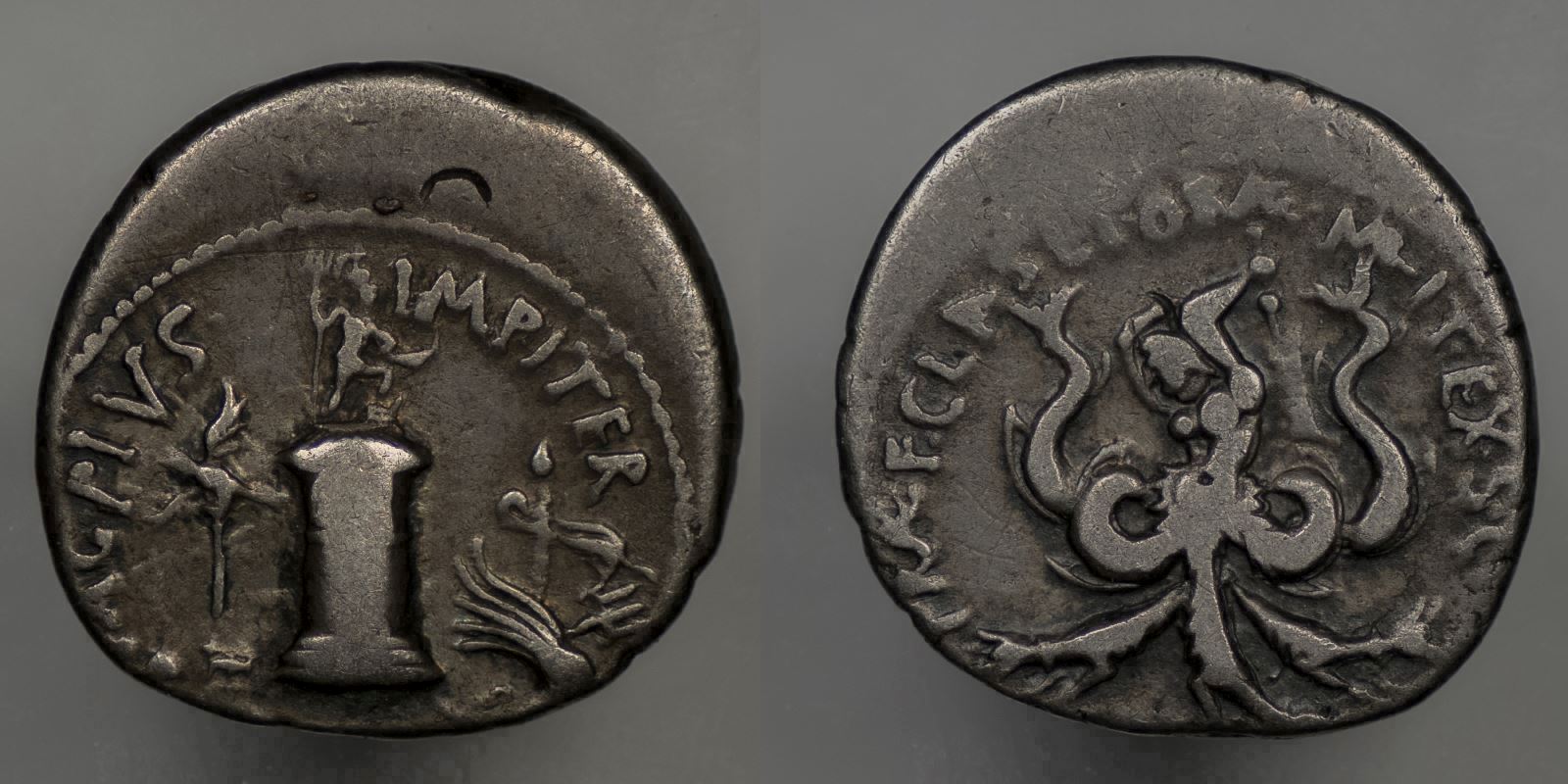
Reverse: PRAEF. CLAS ET. ORAE. MARIT. EX. S.C, The monster Scylla facing left, her torso of dogs and fishes, wielding a rudder as a club with both hands
Die Orientation: 12 H
Weight: 3.74 g
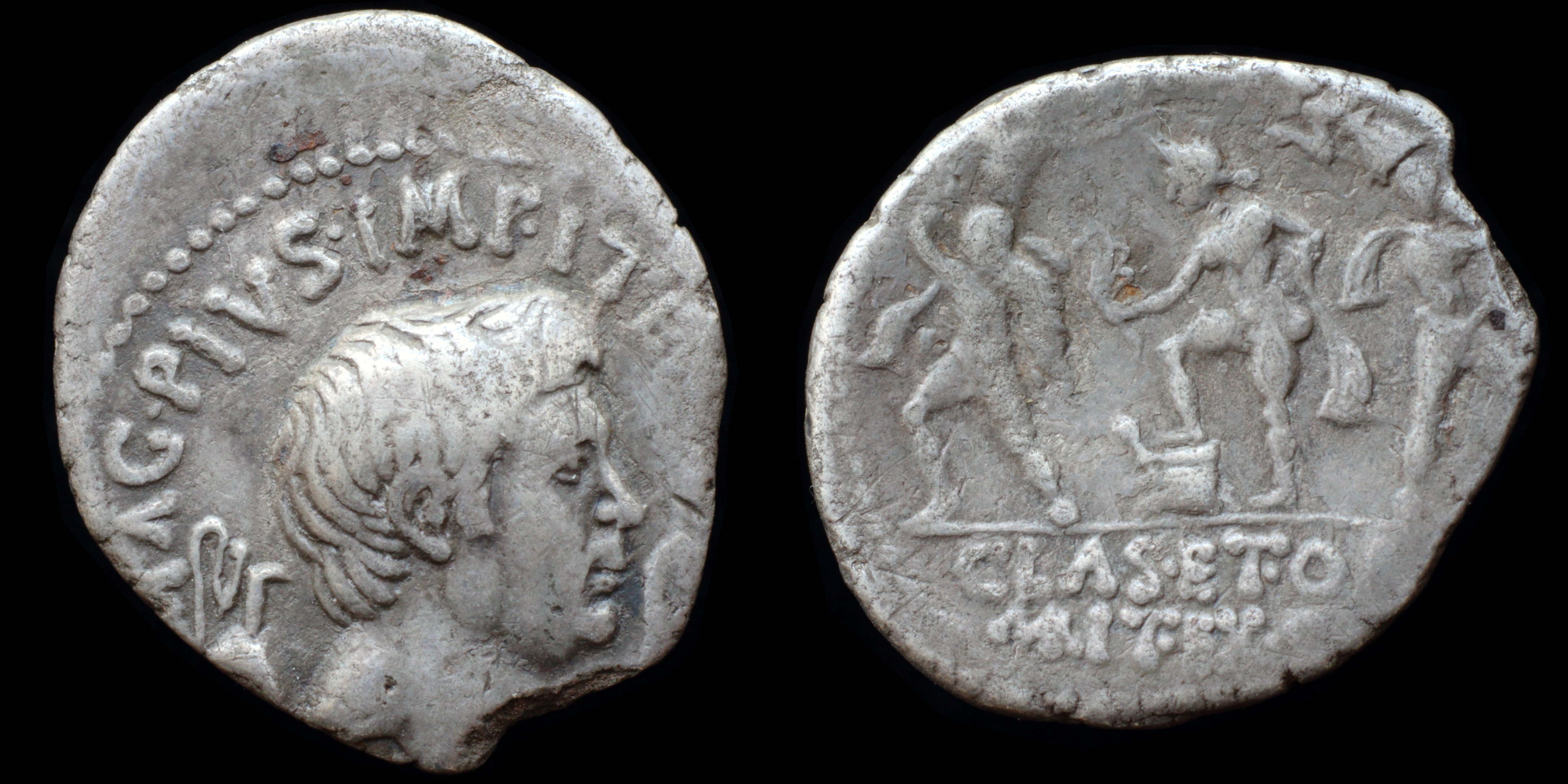
Reverse: Neptune standing left, foot on prow, holding aplustre and chlamys; the brothers Anapias and Amphinomus running in opposite directions on either side, holding their parents on their shoulders, PRAEF / CLAS·ET·OR(AE) / (MAR)IT·EX·S·C
Die Orientation: -
Weight: 3.4 g
